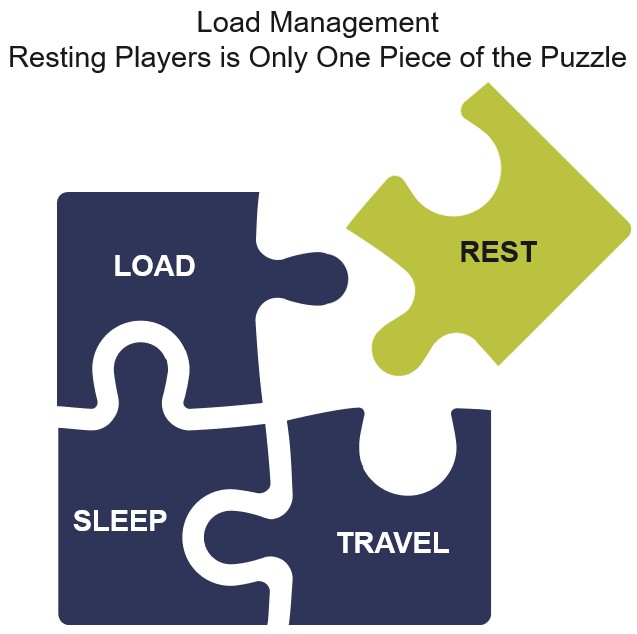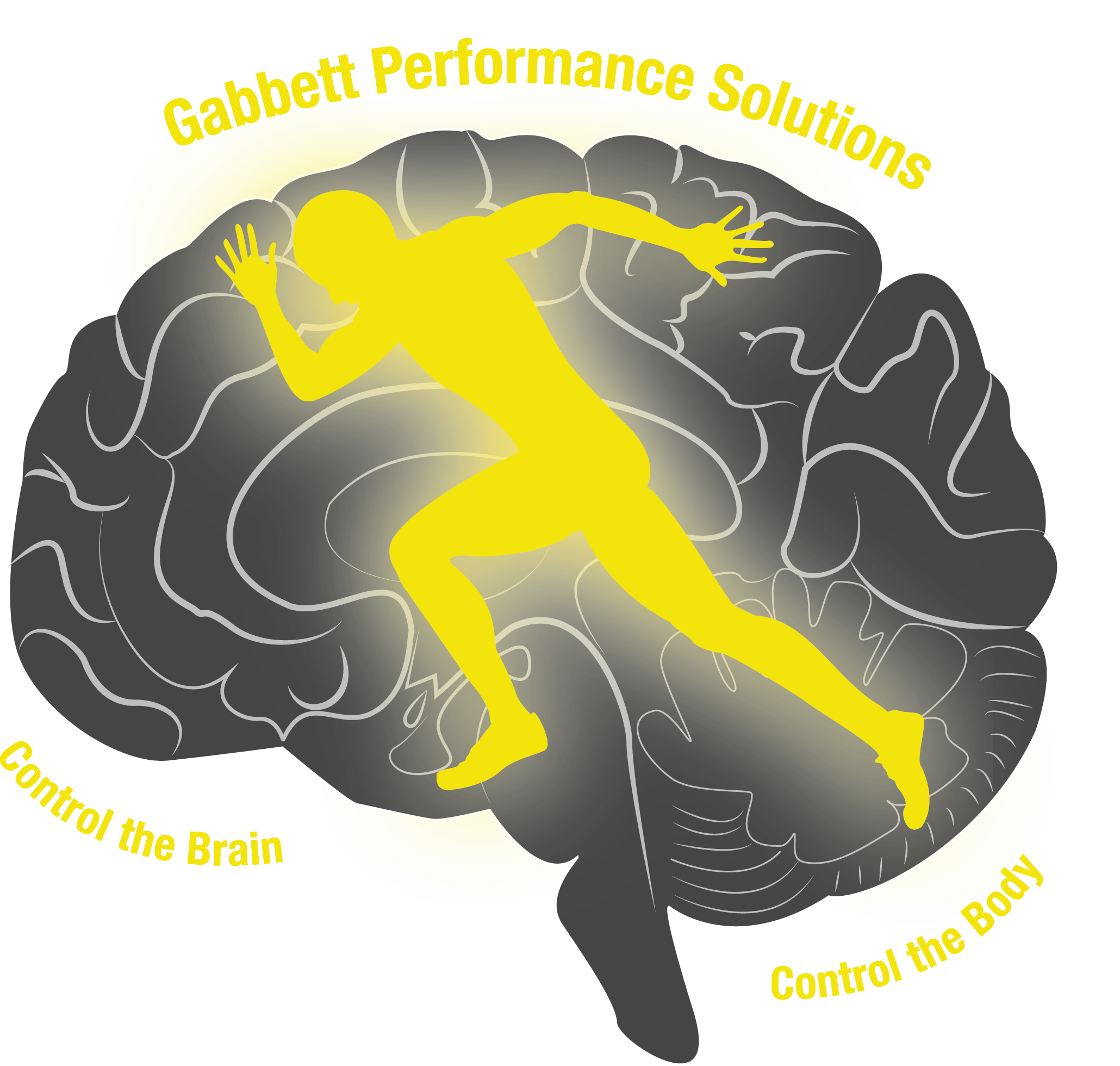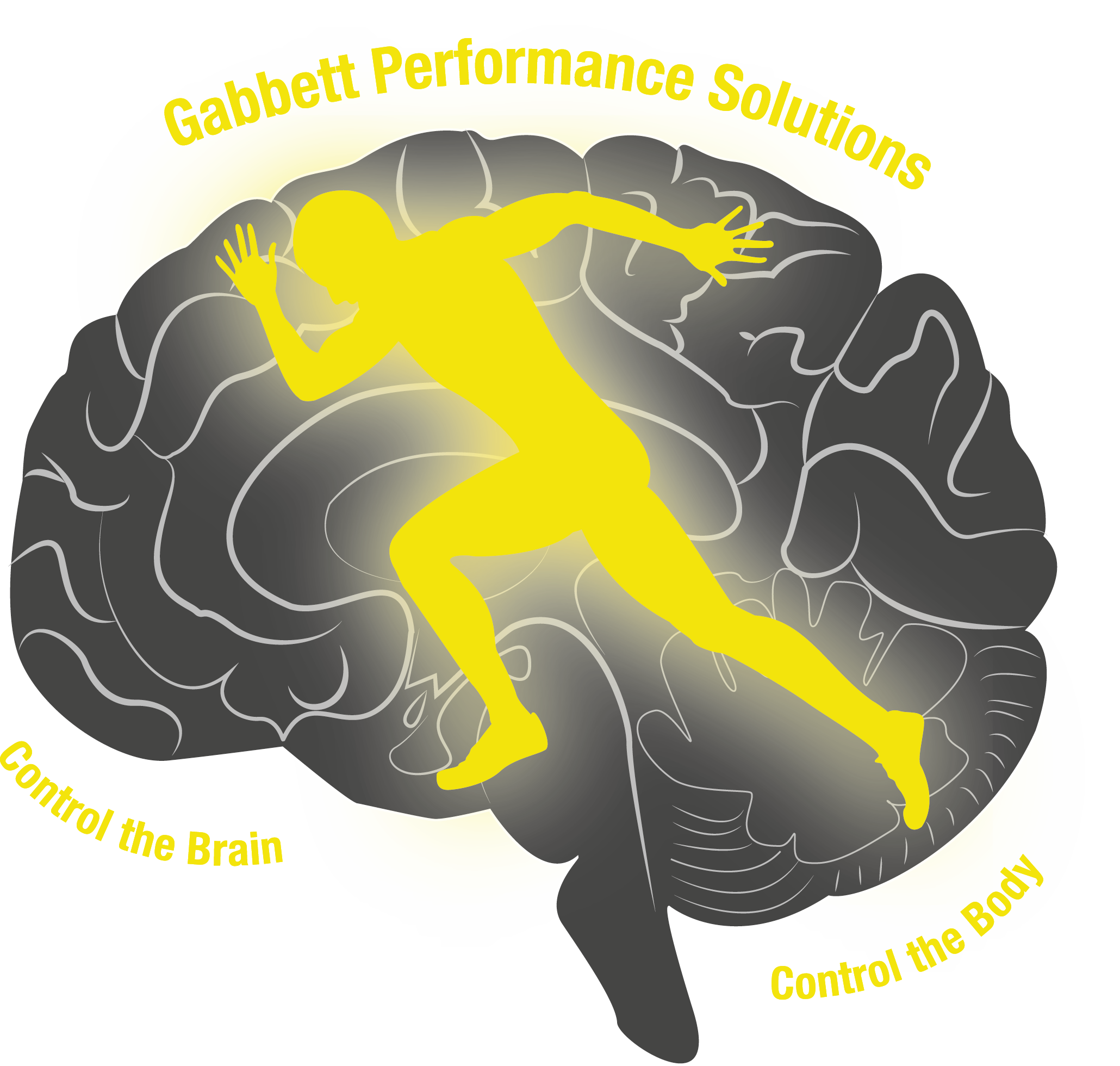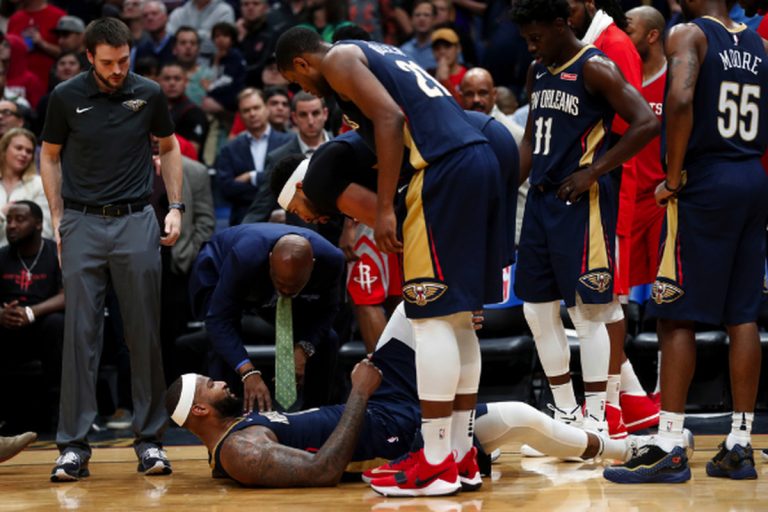If you’re an NBA fan or commentator, you could be mistaken for thinking that load management is all about rest! Afterall, as a fan, you’ve paid big money to watch your favorite player, only to turn up to the game and find he is resting due to “load management”! On the other hand, these players are required to compete at home, and on the road, in back-to-back games in different time zones, with disrupted sleep and recovery. Is it reasonable to expect them to play every game of an 82-game season and still be at their peak for the play-offs? This is the challenge facing the NBA, players, owners, front office, and team sports medicine staff.
I’ve Said it Once, I’ll Say it Again – Load Management is NOT About Sitting Players Out!
While recovery is an important part of the training process, and is where adaptation occurs, training provides the stimulus for that adaptation. So, load management shouldn’t just be viewed as players missing games – it should involve the use of well-established training principles to develop robust and resilient athletes. These principles include progression, specificity, individuality, variation, and reversibility. Recovery (i.e. rest) is also a principle of training, but note that it is not the entire load management puzzle – if rest was all that was needed to elicit great athletic performances, then there would be no such thing as training! These training principles are designed to develop physical qualities and have players available for selection more often and in the best physical and mental state possible.

Two things are certain about professional sports: players want to be able to contribute to winning teams, and they want to compete for championships. It’s often stated that a player’s best ability is availability – to contribute to winning teams and compete for championships, players have to be available! A recent article addressing the load management conundrum highlighted that the NBA and the NBA Players Association were in discussions to have players play a minimum number of games in order to be eligible for major awards.1 On face value, this may solve a lot of problems. The NBA (and fans) have their stars on court more often, the players earn the right to win individual accolades, and having the best players available increases the chances of the team making the play-offs and potentially winning the championship!
So, What’s the Downside?
No agreement has been reached on the number of games that players would need to play in order to qualify for the awards, but there are still some challenges with this concept. First, we need to consider the individuality principle – the optimum number of games per season for one player (let’s say Giannis Antetokounmpo) could be completely different to another (e.g. Zion Williamson). Performance is linked to training load, which in turn is linked to capacity – typically increases in load result in better capacity, which can lead to better performances. However, the load-capacity relationship is influenced by a players’ health – players can experience reductions in capacity due to transient reductions in health (e.g. lack of sleep, increases in stress, etc).2 So, having players available is one thing – but having them healthy and ready to compete is another! Second, while the best players are likely to be available on a more frequent basis, there is still the chance that fans and television broadcasters may be without star players for some games.

What Would it Be Like to Be a Fly on the Wall?
Decisions around the availability of players are not made lightly. Having worked with some of the best teams in professional sport, I’d like to provide a “fly on the wall” view of how some (NB not an exhaustive list) of these interactions unfold:
1. Players are given the opportunity to learn more about load management and how, when implemented correctly, it can result in better performances and prolong their career. In my experience, these group sessions are a lot of fun! Players want to know how to get the best performances possible. And when coaches aren’t in the room, they will ask the questions that they wouldn’t normally get the opportunity to ask: “I know sleep is important. But I don’t like going to bed at 10pm and getting up at 6am – I like going to bed at 2am and getting up at 10am! It’s still 8 hours, right?!” These players are high profile people, but they are like most 25 year-olds! It’s important that we understand that and meet them at their level.
2. Based on their loading and injury history and the moderators of the load-tolerance relationship (e.g. age, lower-body strength, aerobic fitness), players are “advised” to play a maximum number of games throughout the season. If it’s a collaborative discussion that includes the player and their beliefs, then this can be an effective starting point – but rigidly mapping out an entire season and attempting to predict how a player will feel on a specific date in the future, is short-sighted!3 In this respect, team staff and players need to flexible and agile with their periodization strategies.
3. “Performance Partnerships” are formed between players and team staff. One of the comments from an NBA player that resonated strongly with me was “They think I’m fragile. I want them to know I’m strong – I’m stronger than they think!” The best staff are the ones who work with the player and find ways to reinforce their positive beliefs, rather than sowing a seed of doubt about their resilience. We often hear that “players need saving from themselves!” In my experience, on most occasions this is complete rubbish! No-one will understand how that player is feeling better than the player themselves. If load is high and the player is feeling great and wants to play, resting might not be the best option! The best staff implement load management strategies with the player not on the player.
Final Comments
Sport is at a tipping point with load management. Professional sporting competitions want their stars playing, coaches know how important their best players are to the team, and players want to play! There are sports medicine and performance teams who are doing a terrific job working with players to optimize their health and performance. Importantly, the most successful organizations remember that they are working with humans. Although at times players appear to be able to perform super-human feats, they are not robots – and the load management challenge won’t be solved using a mathematical algorithm! If we have learned anything about load management it is this – you can’t do load management “to” players, you’ve got to do it “with” them!
Check out Tim’s load management workshop in heaps of new locations!
References
1. Charania S. NBA, Players Association in advanced talks to add games mininum for major awards: Sources. The Athletic. Mar 14, 2023; https://theathletic.com/4302493/2023/03/13/nba-awards-minimum-games-played/
2. Verhagen E, Gabbett T. Load, capacity and health: critical pieces of the holistic performance puzzle. Br J Sports Med. 2019 Jan;53(1):5-6.
3. Kiely J. Periodization theory: confronting an inconvenient truth. Sports Med. 2018 Apr;48(4):753-764.





